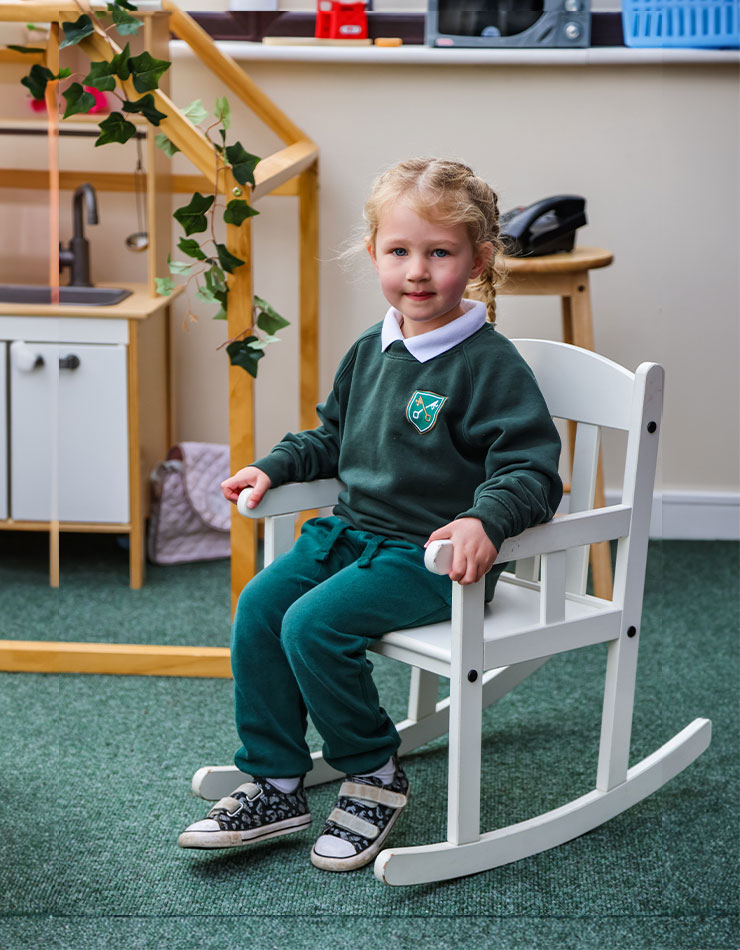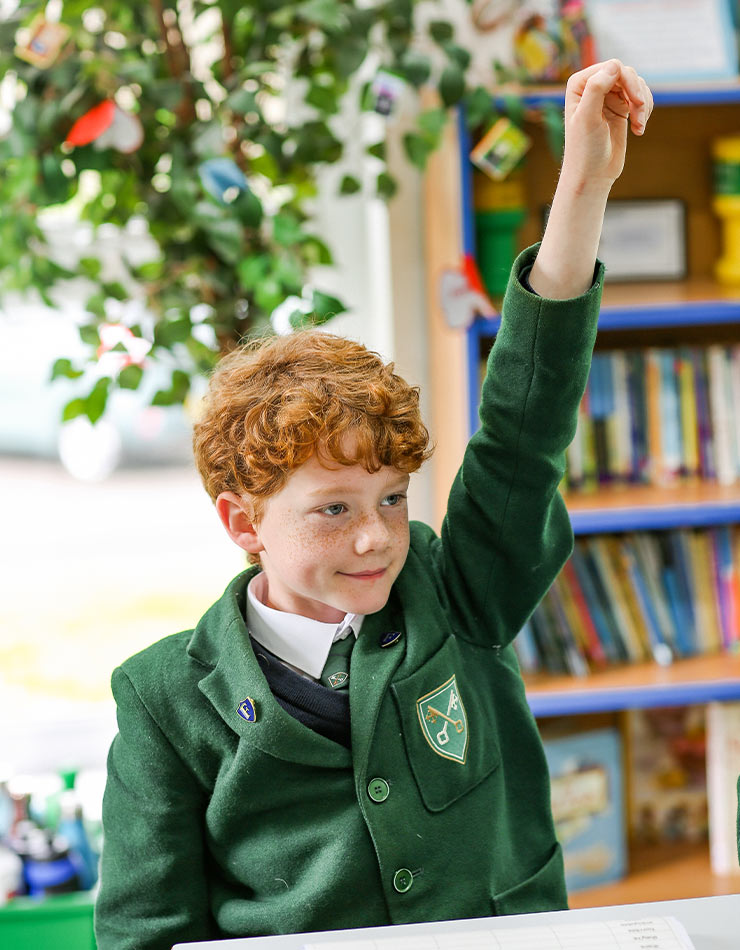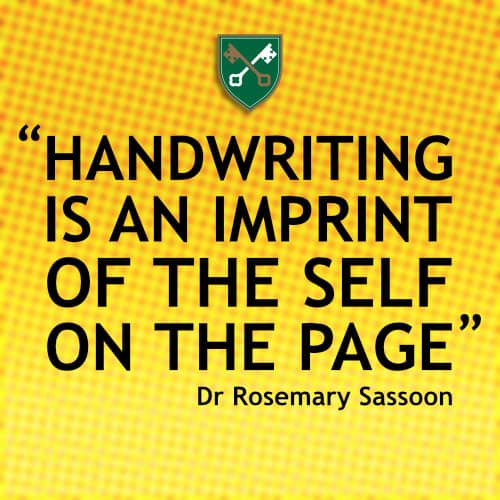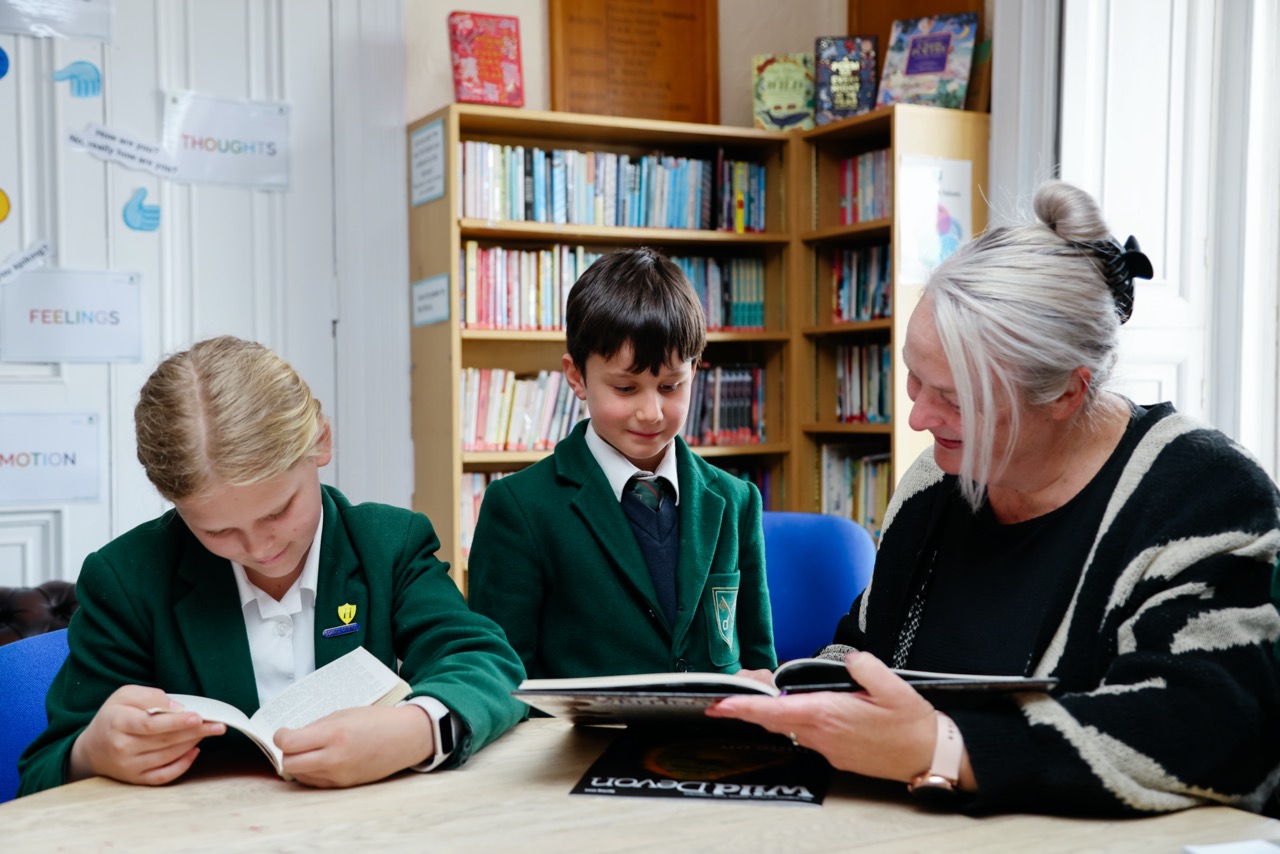Teachers generally do not relish a staff meeting.
They are usually full of information. Quick-paced. A lot to get through in a short space of time. No doubt, you leave a staff meeting with a job or two to complete. Hence they are not many peoples’ favourite time of the week.
At St Peter’s Prep School we have a set staff meeting programme every academic year which is flexible and changes throughout a term. It allows us to review practice, policy and procedure. It allows us to reflect and reassess our practice. It allows us to develop our own skills and knowledge about education and pedagogy. It allows us to talk and argue and reason so that we are doing everything for the benefit of your child’s development. It is useful for CPD and training and it is vital for communication and finding consistency across the school.
During Week 6, Mrs. Samantha Parker (Head of Upper School and Faculty Lead of Languages) and Mrs. Lizzy Glanvill (Head of Pre-prep) planned, prepared and delivered a staff meeting for all English teachers from Nursery to Year 8 – we were focusing on the subject of Handwriting. All staff got to talk about the provision of handwriting in their classrooms. Common language such as ‘lead in lines’ and ‘lead out lines’ were confirmed. Resources were displayed for colleagues to look at and talk about in further depth.
Mrs. Parker and Mrs. Glanvill were so delighted with the evening’s meeting that they fed back to all staff involved:
We just wanted to say a huge ‘THANK YOU’ for tonight’s meeting. It was such a positive, productive and constructive use of our time and we are always blown away with the incredible practice that happens on a daily basis for our children. You all shared your work and activities with such pride and confidence and it was a fantastic example of the progression and provision we are able to offer – the pupils at St. Peter’s are a lucky, lucky bunch.
Formal feedback and information shared will be collated into a document and shared with you.
Learning how to write is more than just holding a pencil; it is a building block to learning. Handwriting helps with memory, improves expression, and supports fine motor skill development. Some would argue that the growth of computers, smartphones, and other mobile devices has rendered handwriting useless. However, handwriting skills are more important than ever. Studies show that the sequential finger movements necessary for handwriting can activate the region of the brain involved in thinking, memory, and language.
In the early childhood setting, the activities many children perform with their hands are actually prewriting skills designed to improve visual motor function, visual perception (space awareness), hand/eye coordination and motor control.
(Can you see why in our prep review of 2018-2019 we decided to keep the majority of the pupils’ preps as handwritten pieces of work?)
We thought we would share the Handwriting review document with you. We teach them three stages of Handwriting:
- Pre-handwriting patterns
- Single-letter and number formation
• Sitting correctly at a desk
• Pencil grip
• Paper position - Joining letters
| Year Group | Frequency and timing of Handwriting Lessons/Activities | Type of Activity/Lesson and type of book used | Examples of resources, activities and books used to support handwriting development across 10 years worth of progression. | |
|---|---|---|---|---|
| N | Daily fine motor activities as continuous provision. Pre-Handwriting. | Free choice around the classroom. Pencil grip. Fine motor activities. Pincer movements. Dough disco. |  |  |
| R | Daily fine/gross motor activities. As above but also a daily job (piece of work). | Activities such as scrunchies, cutting, pencil holding, insets, colouring following rules. Pre-writing patterns. Moves onto handwriting book when ready. Then use in independent writing in stages. Use red books. |  |  |
| Y1 | 3 x mornings a week set handwriting alongside busy fingers. Differentiated for each child. | Correction of formation. Setting targets at the start of year. Capital letters. Struggle from lines to single lines. In third term some children will have joining introduced. | 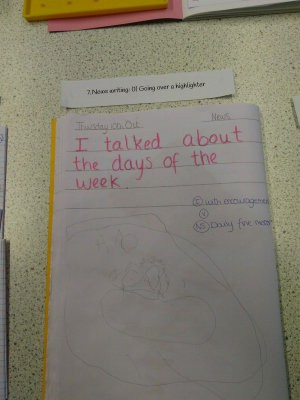 | 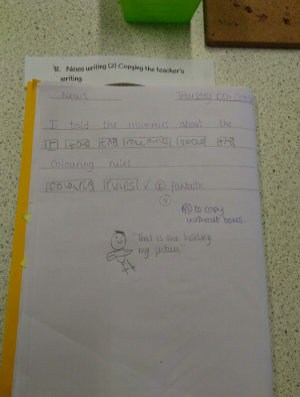 |
| Y2 | Handwriting timetabled on a Friday then followed up during the week. Intervention group – if needed. | Start joining. Link into spelling patterns. Modelled on whiteboard and copied into books. Lead in and out lines introduced. Independent ‘repeat, repeat, repeat’ handwriting booklets that the children work through – then transfer onto different mediums. Dictation not currently used. | 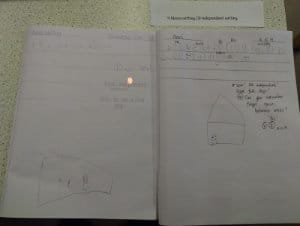 |  |
| Y3 | Friday spelling and dictation 1 x per week. Finding it hard because of loss of morning activity time). | Friday spelling and dictation. Start on purple books and move on but this year. Send home prep once a week (if needed). Tracking from board – new skill to learn. | 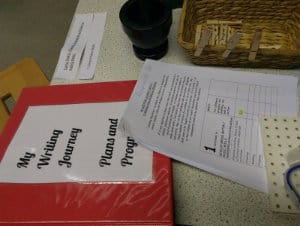 | 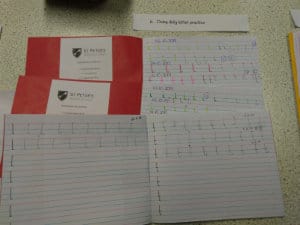 |
| Y4 | Half an hour 1 x per week. | Gone back to basics with every child heading for speed accuracy and fluency. Handwriting screener at this age? Intervention groups. Some dictation. | 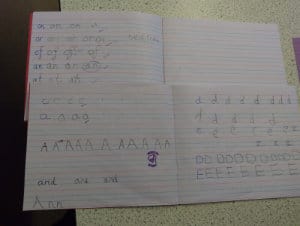 | 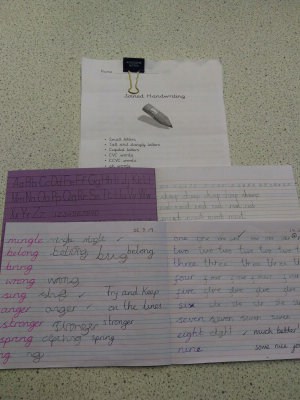 |
| Y5/6 | Handwriting session each week and linked to spellings. Once they have proved they can join across the curriculum – they then get pen licence. Scholastic handwriting book used. | Handwriting sample written and photocopied and put into each book – all teachers then know expectations. . Handwriting session has been added to the timetable this year because of need. Poems to copy. Dictation for spellings. | 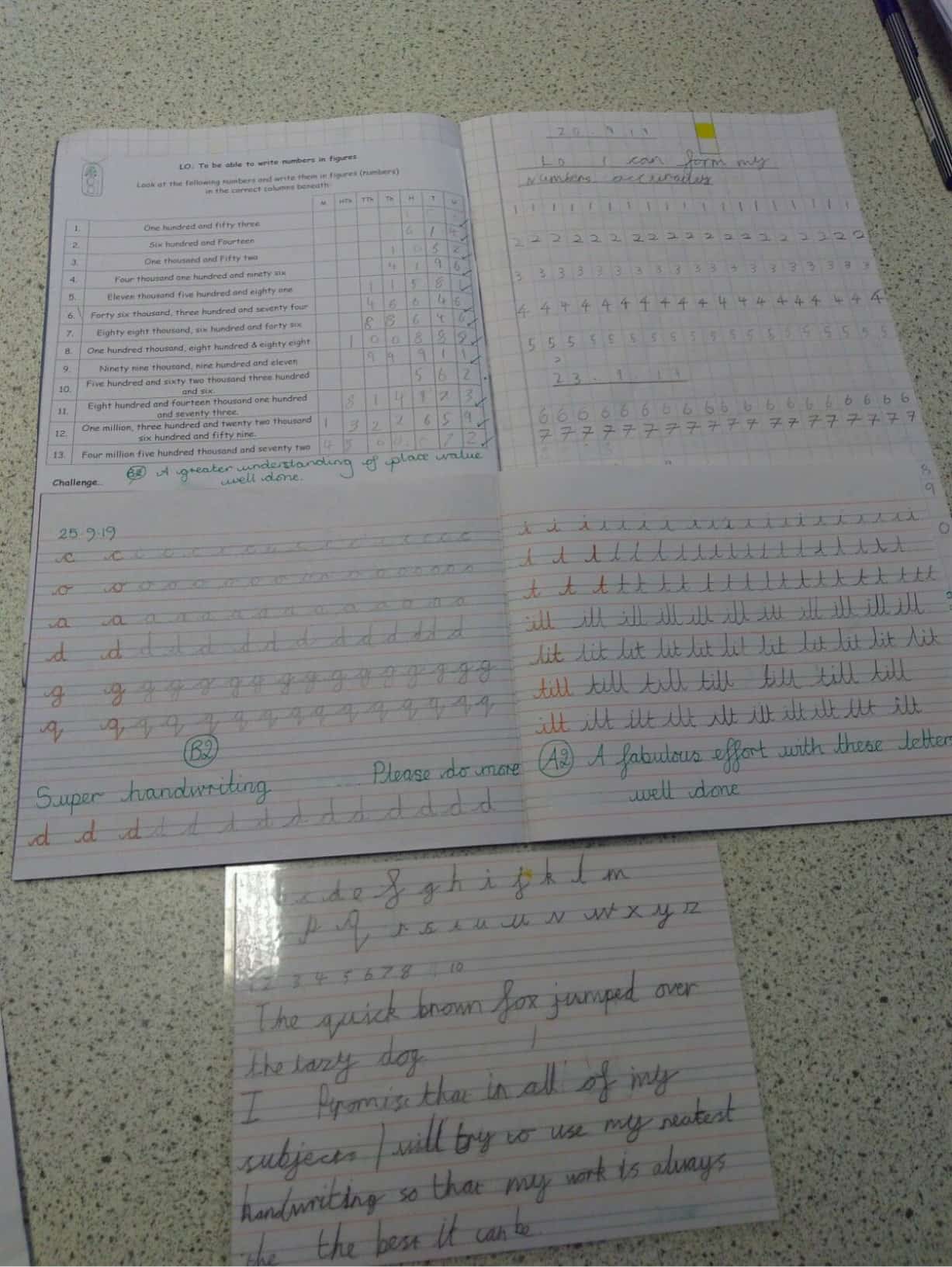 |  |
| Y7/8 | Years 7 & 8 – own handwriting work on a 1:1 pupil need basis. | |||

